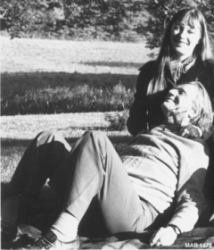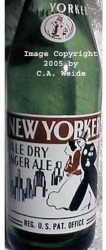Henry Dreyfuss was born in Brooklyn, NY in 1904. He attended public schools in New York and the Ethical Culture School until 1922. He studied under Norman Bel Geddes until 1924, and then worked in stage design and industrial design. In 1928 he opened his own office.
In the 1930’s and 1940’s he designed or redesigned everything from kitchen tools and clocks to locomotives. In 1935 the Crane Company became a client and he assigned 34 design patents to them.
Walter Dorwin Teague
Walter Dorwin Teague (1883-1960) was born in Pendleton, Indiana. He studied at The Art Students League in New York from 1903 through 1907. After four years with an advertising agency, he began to freelance. In 1926 he opened his agency devoted to industrial design. In 1927-28 he started a life-long relationship with Eastman Kodak.
Frank Fletcher
In 1945, after a career producing weaponry for the United States Air Force and just about everything else that the armed forces wanted, Frank P. Fletcher turned to consumer products for his company’s future. The Fletcher Desk was designed and made for the American public. He named his company Fletcher Aviation and gave it a slogan, “Putting Wings on the World”. Fletcher obtained design patents for four other triangular desks, which were apparently not produced. He also received patents for two streamlined baby walkers, a household utility cart, two flower holders, and two bicycles.
Warren McArthur
Warren McArthur (1885-1981) was born into a prosperous Chicago family. He graduated from Cornell in 1908 and in 1913 he moved to Phoenix to work with his brother Charles. With their father’s (Warren McArthur Sr.) encouragement and backing they became prominent and commissioned their older brother Albert Chase McArthur (1881-1951) to design a resort hotel for them in Phoenix, the Arizona Biltmore, which opened in 1929. The Biltmore needed chairs that could be used indoors and out and Warren McArthur provided the answer… Aluminum Furniture.
Kurt Versen
Kurt Versen (1901 - 1997)
Was born in Sweden in 1901 and after studying in Germany immigrated to united states in 1930.
He es known for his lighting designs. His lighting was shown at both the 1933-34 Chicago World's Fair and the 1939-40 World's Fair in new York.
In addition table and floor lamps produced by his own kurt Versen Company Company, He also designed a complete line of lamps for Lightolier in the 1930's.
Kurt Versen passed away in 1997.
Rene Lalique
René Jules Lalique (1860–1945)
René Jules Lalique is born on April 6,1860, in the village of Ay, in the Champagne region of France. Two years later, his father, a Parisian mercantile agent, moves his family to a suburb of Paris. They return to Ay for summer holidays, and Lalique will have a lifelong attachment to his native countryside.
Maurice Dufrene
Maurice Dufrene (art deco, designer, 1876-1955)
A founder member of the Societe des Artistes Decorateurs, Dufrene with Leon Jallot, was among the group of French designers who became known as the Constructeurs, before the First World War.
Dufrene had worked on Meier-Graefe’s ‘La Maison Moderne’ around 1900 designing in the Art Nouveau style.
By 1910, his work adapted more simplified forms using more substantial materials and construction.
Pair Of Modular Mid Century Mirror Base Credenzas
*Only Credenza "B" is still available*
-servikam- Werner Graeff Silkscreen 23/50 Pencil Signed
Werner Graeff (German, 1901–1978)
Graeff was one of the first members of the Constructivist movement, a student at the first Bahaus school in Weimar, the youngest member of the DeStijl and co-editor of the avant-garde magazine "G". He was also a contributor to the early absolute films by Moholy-Nage and Hans Richter.
"SERVIKAM" Silk screen #23/50, signed Werner Graeff 1975
Frame size 24 3/4" x 31"





.png)